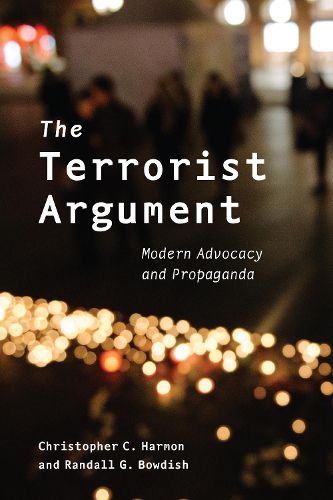Readings Newsletter
Become a Readings Member to make your shopping experience even easier.
Sign in or sign up for free!
You’re not far away from qualifying for FREE standard shipping within Australia
You’ve qualified for FREE standard shipping within Australia
The cart is loading…






This title is printed to order. This book may have been self-published. If so, we cannot guarantee the quality of the content. In the main most books will have gone through the editing process however some may not. We therefore suggest that you be aware of this before ordering this book. If in doubt check either the author or publisher’s details as we are unable to accept any returns unless they are faulty. Please contact us if you have any questions.
From chants and pamphlets to the Internet, terrorist propaganda can be deadly effective
Propaganda used by terrorists and armed groups might not always be the most sophisticated or nuanced form of rhetoric, but with the right mix of emotion and logic it can be extremely effective in motivating supporters and frightening opponents. This book examines how terrorist groups in recent history have used propaganda, and how they had adapted to new communications technologies while retaining useful techniques from the past.
Harmon traces how armed groups and terrorists around the globe have honed their messages for maximum impact, both on the communities they hope to persuade to support them and on the official state organs they hope to overthrow. Sometimes both the messages and the techniques are crude; others are highly refined, carefully crafted appeals to intellect or emotion, embracing the latest forms of communications technology. Whatever the ideas or methodology, all are intended to use the power of ideas, along with force, to project an image and to communicate-not merely intimidate.
The Terrorist Argument uses nine case studies of how armed groups have used communications techniques with varying degrees of success: radio, newspapers, song, television, books, e-magazines, advertising, the Internet, and social media. It is fascinating reading for anyone interested in civil conflict, terrorism, communications theory and practice, or world affairs in general.
$9.00 standard shipping within Australia
FREE standard shipping within Australia for orders over $100.00
Express & International shipping calculated at checkout
This title is printed to order. This book may have been self-published. If so, we cannot guarantee the quality of the content. In the main most books will have gone through the editing process however some may not. We therefore suggest that you be aware of this before ordering this book. If in doubt check either the author or publisher’s details as we are unable to accept any returns unless they are faulty. Please contact us if you have any questions.
From chants and pamphlets to the Internet, terrorist propaganda can be deadly effective
Propaganda used by terrorists and armed groups might not always be the most sophisticated or nuanced form of rhetoric, but with the right mix of emotion and logic it can be extremely effective in motivating supporters and frightening opponents. This book examines how terrorist groups in recent history have used propaganda, and how they had adapted to new communications technologies while retaining useful techniques from the past.
Harmon traces how armed groups and terrorists around the globe have honed their messages for maximum impact, both on the communities they hope to persuade to support them and on the official state organs they hope to overthrow. Sometimes both the messages and the techniques are crude; others are highly refined, carefully crafted appeals to intellect or emotion, embracing the latest forms of communications technology. Whatever the ideas or methodology, all are intended to use the power of ideas, along with force, to project an image and to communicate-not merely intimidate.
The Terrorist Argument uses nine case studies of how armed groups have used communications techniques with varying degrees of success: radio, newspapers, song, television, books, e-magazines, advertising, the Internet, and social media. It is fascinating reading for anyone interested in civil conflict, terrorism, communications theory and practice, or world affairs in general.